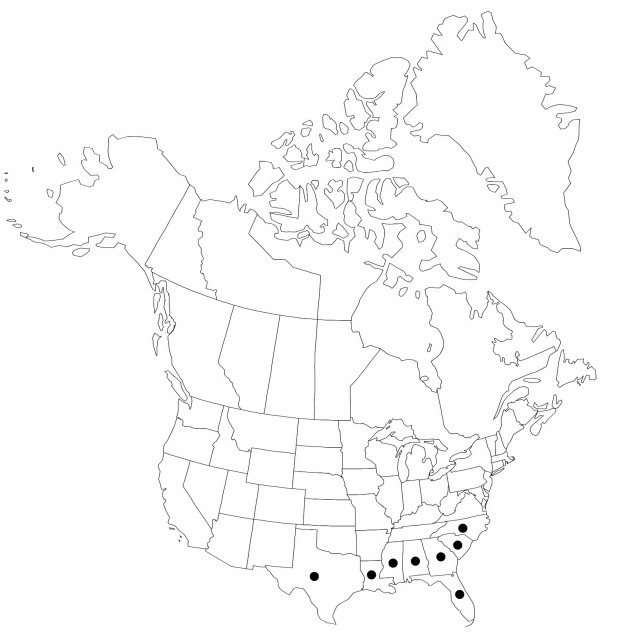Fimbristylis decipiens
Sida 4: 119, fig. 38. 1971.
Plants annual, cespitose, to 30 cm, base soft, not bulbous; rhizomes absent. Leaves nearly distichous, mostly spreading, to 2/3 length of culms; sheaths ciliate, sheath backs often pilose-hirsute; ligule present, complete; blades narrowly linear, 1.5–2.5 mm wide, flat or shallowly concave, margins scabrid, abaxial surface scattered-pilose, hirsute-ciliate at least proximally. Inflorescences: anthelae simple or compound, open, divaricately branched, mostly as broad as long; scapes slender, 1 mm wide, distally slightly compressed; proximalmost involucral-bract exceeding or shorter than anthela. Spikelets pale-brown or redbrown, ovoid to lanceoloid, 5–6 mm; fertile scales broadly ovate, 1.5–2 mm, acute to obtuse-angled, midrib shortexcurrent as mucro. Flowers: stamens 1–2; styles 2-fid, flat, fimbriate. Achenes whitened-iridescent to brown, lenticular or pyriformobovoid, 1 mm, cancellate, each face with 5–12 vertical rows of transversely oriented rectangular pits, achene margins distally papillose. 2n = 20.
Phenology: Fruiting late summer–fall.
Habitat: Disturbed sites, low pinelands, banks, and fields
Elevation: 0–100 m
Distribution

Ala., Fla., Ga., La., Miss., N.C., S.C., Tex.
Discussion
In the Atlantic and Gulf Coastal plains, Fimbristylis decipiens often shares habitat with two close, likewise weedy, relatives: F. dichotoma and F. annua. From the former F. decipiens is distinguished by its annual habit, its papillose distal achene edges, and the more spreading anthela branches; from the latter it differs in its usually less papillose achene and its harder, more spreading foliage. No intergrades appear to occur among the three.
Selected References
None.
Lower Taxa
"shortened" is not a number."lengthofculms" is not declared as a valid unit of measurement for this property. "/3lengthofculms" is not declared as a valid unit of measurement for this property.
